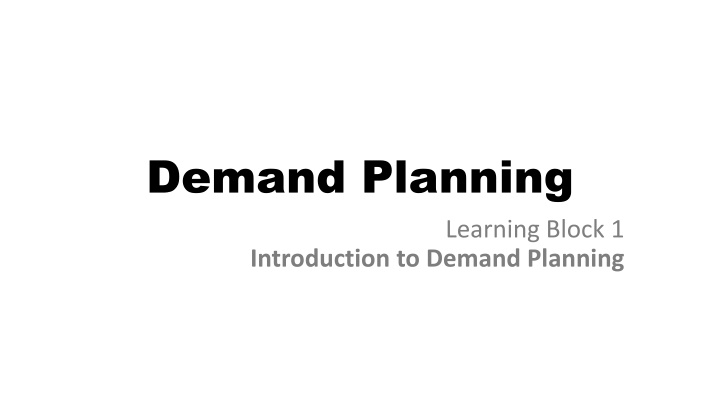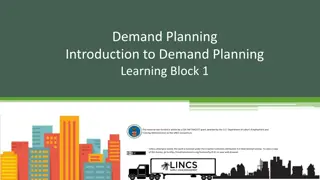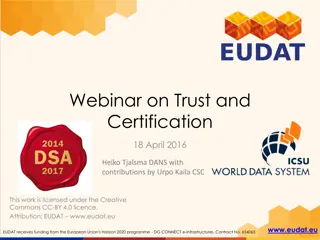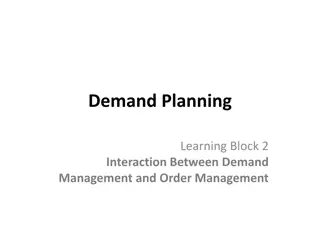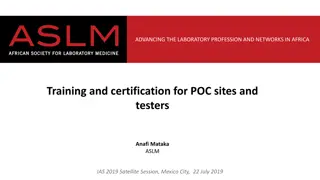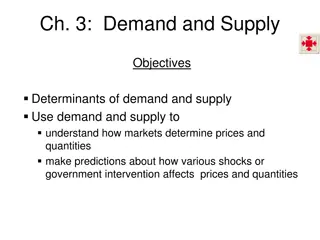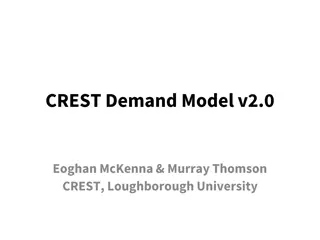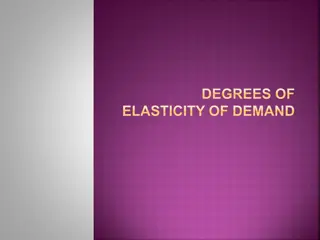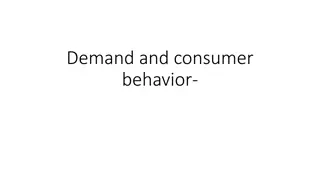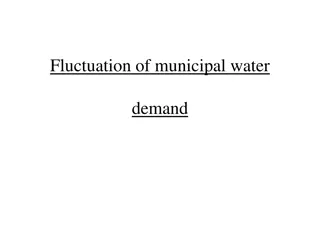Comprehensive Introduction to Demand Planning Certification Track
Dive into the world of demand planning with this certification track designed to equip students with essential knowledge and skills in anticipating, managing, and planning customer demand. Explore key concepts such as demand planning principles, tools, and communication strategies to excel in the dynamic field of supply chain management.
Download Presentation

Please find below an Image/Link to download the presentation.
The content on the website is provided AS IS for your information and personal use only. It may not be sold, licensed, or shared on other websites without obtaining consent from the author.If you encounter any issues during the download, it is possible that the publisher has removed the file from their server.
You are allowed to download the files provided on this website for personal or commercial use, subject to the condition that they are used lawfully. All files are the property of their respective owners.
The content on the website is provided AS IS for your information and personal use only. It may not be sold, licensed, or shared on other websites without obtaining consent from the author.
E N D
Presentation Transcript
Demand Planning Learning Block 1 Introduction to Demand Planning
Abstract Abstract The effective anticipation, planning, and management of customer demand are key factors in the success of any organization. Companies strive to provide improved customer service levels at reduced costs, with planning and managing demand being two key components. This certification track is intended to train students in the basics of demand planning so they can quickly familiarize themselves with and become effective contributors to the demand planning processes that are part of SCM. Key elements of this certification track include aspects of demand planning, interaction between demand and order management, demand planning principles, demand planning tools and techniques, communication and management of demand, and contemporary approaches to demand planning. The goal of this certification track is to prepare students to pass the demand planning national certification examination. The content of the certification track was developed by LINCS in Supply Chain Management Consortium. SCPro examinations are owned and administered by the Council of Supply Chain Management Professionals (CSCMP). Fundamentals Certification
Course Agenda Course Agenda 1. Introduction to Demand Planning 2. Interaction between Demand Management and Order Management 3. Demand Planning Principles 4. Demand Planning Tools and Techniques 5. Communicating and Managing Demand 6. Contemporary Approaches to Demand Planning and Management 3
Introduction to Demand Planning Introduction to Demand Planning Learning Block 1
Learning Block Agenda Learning Block Agenda Unit 1: Supply and Demand Planning Unit 2: Factors Affecting Demand Unit 3: The Demand Planning Process Unit 4: Demand Planner Skills and Typical Reporting Structures
Description Description Demand planning is a critical process that companies use to incorporate various inputs to predict or approximate future customer demand. Without an understanding of customer demand, companies cannot plan accurately for staffing, inventory, finished products, and other support services. 6
Learning Objectives Learning Objectives Define demand planning and why it is important to company success Understand the factors that affect demand Explain the primary approaches to planning demand Apply the key roles and skills required in demand planning Analyze the metrics used in demand planning processes
Unit 1: Supply and Demand Planning Unit 1: Supply and Demand Planning WHAT IS DEMAND PLANNING? Demand planning is a process that incorporates demand forecast inputs from sales, marketing, and customers. It also incorporates supply capacity inputs from manufacturing, inventory management, and suppliers to estimate anticipated demand accurately.
Unit 2: Factors Affecting Demand Complementary Products and Services Size of Market Substitute Products and Services Customer Preferences Customers Future Expectations Income Shifting Commodity Markets
Risk Events Operational risk such as equipment failure, abrupt supply discontinuities, labor disruptions, and quality issues. For example, a company in the U.S. that has a key supplier in France might experience disruption if strikes impact the French supplier. OPERATIONAL RISK Natural disasters such as earthquakes, hurricanes, and tornadoes. For example, a U.S. company located on the East Coast could be impacted by key suppliers in the Midwest that were affected by flooding of major waterways. NATURAL DISASTERS Terrorism and political instability are also sources of risk that can cause supply chains to become vulnerable. Recent world events have served to illustrate the significant impact that these events can have on supply chains. Examples include commercial ship hijacking and the threat of bombs hidden within cargo. TERRORISM AND POLITICAL INSTABILITY Commercial or market risk includes shifting demand and supply patterns and unexpected price increases. Many supply managers are reluctant to do business in certain parts of the world, including parts of Latin America and Africa, because of the instability of local and regional economies. COMMERCIAL OR MARKET RISK
Unit 3: The Demand Planning Process Unit 3: The Demand Planning Process Demand Forecasting Sensing Demand Shaping Demand
FORECASTING DEMAND Demand forecasts include anticipated orders, orders received, adjustments resulting from changes in inventory policies and actions, and could involve interacting with customers to obtain their feedback. In reality, the process of forecasting demand results in a best guess or prediction of future customer demand, including events that sense and shape that demand.
MANAGING DEMAND Demand management requires individuals who are close to customers and have the skills to communicate changes to demand planners and other functional stakeholders. If demand is increasing, then senior management must decide if risk would be involved in meeting the new, unplanned demand. If demand is declining, then senior management must choose the best way to stimulate demand or the best approach to adjusting supply operations in response to projected decreases, or a combination of both.
Unit 4: Unit 4: Demand Planner Skills and Typical Demand Planner Skills and Typical Reporting Structures Reporting Structures DEMAND PLANNER SKILLS Experience In Recognizing Change Business Knowledge Observational Knowledge
ORGANIZATIONAL STRUCTURES Organizational structures define the reporting hierarchy that make clear to whom individuals report within a company. In an ideal situation, demand planning management would involve a single executive responsible for demand and supply planning activities rather than having responsibility distributed across several managers.
Summary Summary
PRACTICE QUESTIONS 1. Demand planning: a) Incorporates inputs to predict or approximate future customer demand b) Includes the steps and the process to arrive at estimates of profitability c) Is very seldom practiced by companies d)Only involves demand planners 2. The number of potential buyers in a specific market for a given product or service will influence demand. If the market size: a) Increases, this can mean a lower quantity of potential buyers may be available to purchase products or services b) Decreases, this can mean a lower quantity of potential buyers may be available to purchase products and services c) Decreases, this can mean a higher quantity of potential buyers may be available to purchase products or services d) Decreases, this can mean that no potential buyers are available to purchase a company s products or services
PRACTICE QUESTIONS 3. Complementary products or services are those products and services that: a) Are substitute products and services that may exist for what a company offers b) Are given to customers to complement other products that they purchase c) Are typically associated with, or are natural components of, a companies products or services d) Cannot have an impact on demand 4. Consumer income and its increases or decreases over time: a) Do not impact demand for products and services b) Have no impact on a company c) Can impact demand for products and services e) Do not matter to the demand planner
PRACTICE QUESTIONS 5. A good demand planning process enables a company to link: a) Reactions to changes in demand with warehouses b) Unanticipated demand with customers c) Anticipated demand with financial charts d) Demand forecasting capabilities with supply planning capabilities 6. Examples of risk events that have the potential to impact the demand plan are: a) Changes in management and leadership b) Introduction of a new purchase requisition and purchase order process c) Natural disasters, terrorism, and currency fluctuations d) Internal organizational consolidation and changes
PRACTICE QUESTIONS 7. Demand management involves: a) Selling products to customers b) Placing orders for products c) Adjusting internal operations and plans to match actual customer demand d) Providing discounts to customers 8. A demand planner must have thorough knowledge of: a) Detailed warehousing operations b) Purchasing tools and techniques c) Specialized political agendas d) Customers and their buying patterns
PRACTICE QUESTIONS 9. Demand planners are held accountable to develop demand plans but do not require which type of skills? a) Analytical b) Collaborative c) Business acumen d) Advanced calculus 10. Which factor below affects demand? a) Frequency of financial disclosures b) Manufacturing s proximity to consumers c) Variety of transportation options d) Market size
